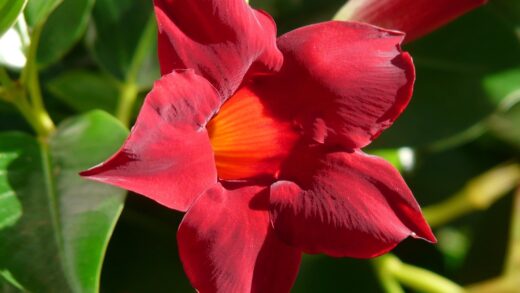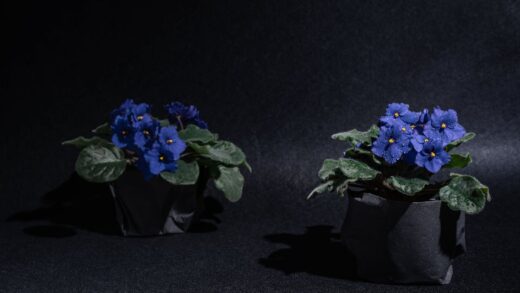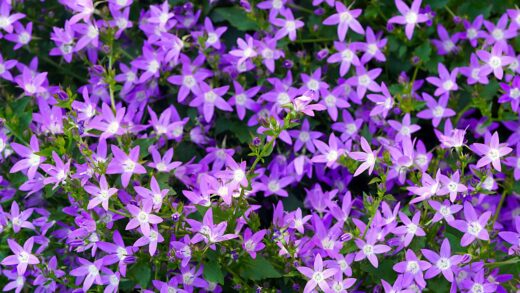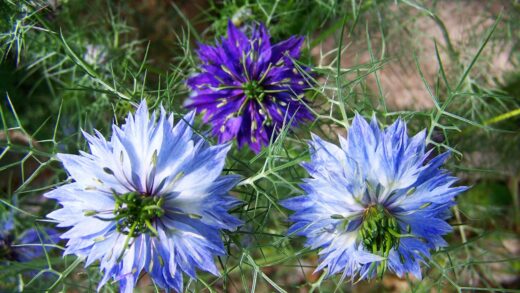Understanding and providing the correct light conditions for the Balkan squill is a cornerstone of its successful cultivation. Like all plants, light is its primary source of energy, and the quantity and quality of light it receives directly impacts its growth, flowering, and long-term survival. This delightful spring-flowering bulb has evolved to thrive in specific light environments in its native habitats of the Balkan Peninsula. By replicating these conditions in the garden, we can ensure the plant has the necessary resources to not only produce a spectacular display of its star-shaped, amethyst-blue flowers but also to store enough energy in its bulb for the following year’s growth.
The Balkan squill is best described as a plant that favors full sun to partial shade. This may seem like a broad recommendation, but the key to understanding its needs lies in considering the timing of the light exposure throughout the year. The most critical period for sunlight is in the spring, during its active growth and flowering phase. At this time, from the moment the first shoots emerge until the foliage begins to die back, the plant requires as much direct sunlight as possible. This high light intensity fuels the process of photosynthesis, which is essential for producing the energy needed for a vibrant floral display.
This preference for spring sun makes the Balkan squill an ideal candidate for planting under deciduous trees and shrubs. In the early spring, before the trees have developed their full canopy of leaves, the ground beneath them is bathed in sunlight. This allows the squill to complete the most energy-intensive part of its life cycle in ideal, bright conditions. As spring progresses into summer and the overhead canopy leafs out, the area becomes more shaded. This subsequent shade is not only tolerated by the Balkan squill but is actually beneficial.
The shade provided by the deciduous canopy during the summer months helps to keep the soil cooler and prevents it from drying out too quickly. This creates a favorable environment for the bulbs as they enter their summer dormancy period. The combination of full sun in the spring followed by partial shade in the summer perfectly mimics the light patterns of the open woodland edges and meadows where these plants naturally grow. Therefore, the selection of a planting site must take into account this seasonal variation in light levels.
The importance of spring sunlight
The period of active growth in the spring is when the Balkan squill’s demand for sunlight is at its absolute peak. From the moment the first green shoots pierce the soil surface, the plant is in a race to produce leaves, flowers, and to photosynthesize as much as possible to build up its energy reserves. Direct and unobstructed sunlight during this phase is the fuel that powers this entire process. Insufficient light during spring is one of the most common reasons for poor flowering and a gradual decline in the health of a bulb colony.
More articles on this topic
When the leaves are exposed to strong sunlight, the chlorophyll within them works at maximum efficiency, converting light energy, water, and carbon dioxide into the sugars that feed the plant. These sugars are used for immediate energy needs, such as the production of the vibrant blue flowers, and, crucially, for storage. After the flowering period is over, the foliage continues to photosynthesize, and the energy produced is transported down to the bulb, where it is stored as starch. A bulb that has been well-fed by ample spring sunshine will be larger, healthier, and will have the resources to produce multiple flowers the following year.
If Balkan squill are planted in a location that is too shady in the spring, the consequences become apparent quite quickly. The plants may produce elongated, weak, and pale foliage as they stretch in an attempt to find more light, a phenomenon known as etiolation. Flowering will likely be sparse, with fewer flower stems and smaller individual flowers. In deep shade, the plants may fail to flower altogether, producing only a few weak leaves. Over time, without the ability to adequately replenish their energy stores, the bulbs will dwindle in size and may eventually die out completely.
Therefore, when choosing a location, it is vital to observe the path of the sun through your garden during the spring months. A south-facing or west-facing aspect is often ideal. Planting them on the sunny side of a deciduous tree, in an open rock garden, or at the front of a border that is not overshadowed by evergreen plants will ensure they receive the bright light they crave. This single factor—abundant spring sunlight—is a non-negotiable requirement for a truly spectacular and perennial display of Balkan squill.
Tolerating summer shade
While full sun is critical in the spring, the Balkan squill’s attitude towards light changes significantly as the season progresses into summer. Once the flowering period is over and the foliage begins to yellow and die back, the plant enters its dormancy. During this resting phase, not only is direct sunlight no longer necessary, but a degree of shade can actually be quite beneficial. The intense heat and drying effect of the midday sun in summer can be stressful for the dormant bulbs if the soil becomes baked and bone-dry.
More articles on this topic
A location that provides partial or dappled shade during the hottest part of the summer helps to moderate the soil temperature and conserve a small amount of residual moisture. This creates a more stable underground environment for the resting bulbs. This is why planting under the canopy of deciduous trees is such a perfect strategy. The bare branches in spring allow for maximum light penetration, while the leafy canopy in summer provides a cool, shaded sanctuary for the dormant bulbs below. This perfectly replicates the conditions found on the floor of the open woodlands from which these plants originate.
It is important to distinguish this beneficial summer shade from the detrimental effect of year-round, deep shade. Planting Balkan squill under evergreen trees or shrubs, such as conifers or rhododendrons, is generally not successful. These plants cast dense shade throughout the year, meaning the squill will be deprived of the essential sunlight they need during their spring growth phase. The competition for moisture and nutrients from the dense root systems of these evergreen plants can also be a significant problem.
The ability to tolerate, and even appreciate, summer shade makes the Balkan squill a highly versatile plant for garden design. It allows them to be used effectively in planting schemes where summer-blooming perennials will later grow up and provide shade. For example, they can be interplanted with hostas or ferns. The squill will have completed their life cycle and be entering dormancy just as these larger, leafy perennials are reaching their full size, creating a seamless succession of interest in the same space.
Light conditions for naturalizing
The Balkan squill is an excellent candidate for naturalizing, which is the process of planting bulbs in an informal setting, such as a lawn or a meadow, and allowing them to spread naturally over time to form large, impressive drifts. When selecting a site for naturalizing, the light conditions are a primary consideration. To succeed in this type of planting, the area must receive plenty of direct sunlight in the spring. A lawn that is heavily shaded by buildings or evergreen trees during the spring will not be a suitable environment for the bulbs to thrive and multiply.
An area of lawn under the high canopy of deciduous trees is often the perfect location. The bulbs will receive the sun they need in early spring before the trees leaf out and before the grass begins to grow too vigorously. This gives them a head start and allows them to flower and begin storing energy before the competition for light increases. The key to success when naturalizing in a lawn is not just the light conditions but also the mowing regime. The area cannot be mown until the squill’s foliage has completely died back, which is typically by early summer. Mowing too early will remove the leaves, prevent the bulbs from storing energy, and will quickly lead to the demise of the colony.
When naturalizing in a meadow setting, the same principles apply. The squill will emerge and flower early in the season, often before the taller meadow grasses and wildflowers have started to grow vigorously. They can create a stunning carpet of blue before the character of the meadow changes for the summer. It is important to ensure that the taller summer-growing plants do not create such a dense canopy that they completely block out the light from reaching the squill’s foliage too early in its post-flowering phase.
The way the light falls on a naturalized planting can also enhance its beauty. The low-angled sun of an early spring morning or late afternoon can make the amethyst-blue flowers seem to glow with an almost translucent quality. Planting them in large, sweeping drifts that follow the contours of the land and the patterns of light and shadow can create a breathtakingly beautiful and naturalistic effect. Careful consideration of the seasonal light patterns is therefore essential for both the horticultural success and the aesthetic impact of a naturalized planting.
Indoor forcing and light
While the Balkan squill is primarily a garden plant, it can be ‘forced’ into early bloom indoors for a delightful touch of spring color during the winter months. When forcing bulbs, controlling the light conditions is a critical part of the process. The initial stage of forcing involves potting the bulbs in the autumn and then subjecting them to a mandatory cold, dark period. This chilling period simulates winter and is essential for stimulating the development of a strong root system and initiating the flower bud. During this time, which typically lasts for 10-12 weeks, the pots must be kept in complete darkness and at a cool temperature, usually between 2-5 degrees Celsius.
Once the chilling period is complete and the shoots are a few centimeters tall, the pots are gradually introduced to light and warmth to encourage them to grow and flower. This transition should not be abrupt. The pots should first be moved to a cool room with low light conditions for about a week. This allows the shoots to slowly acclimate and ‘green up’. Exposing the pale, young shoots to bright, direct sunlight immediately can scorch the tender foliage.
After this initial period of acclimatization, the pots can be moved to their final flowering position. This should be a location that receives bright, indirect light, such as near a south-facing window but shielded from the most intense, direct rays of the sun. Direct, hot sunlight can cause the flowers to fade quickly and can shorten the overall blooming period. The goal is to provide enough bright light to promote healthy, strong growth and good flower color, but without the stress of excessive heat.
Once the bulbs are in flower, maintaining them in a relatively cool location with bright, indirect light will prolong the display for as long as possible. It is also beneficial to turn the pot every day or so to prevent the flower stalks from leaning in one direction towards the light source, ensuring a more upright and symmetrical display. After the forced bulbs have finished flowering, they have expended a great deal of energy. They can be planted out in the garden, but it may take them a couple of seasons to recover enough strength to flower well again.


















